From Daniel Frank (Virginia Tech Pesticides Program):
As of February 28, 2022, all food tolerances for chlorpyrifos were revoked and any new applications of chlorpyrifos will render any food treated as adulterated and ineligible to be distributed in interstate commerce. In issuing the final rule, EPA found that it could not determine that there is a reasonable certainty of no harm from aggregate exposure, including food, drinking water, and residential exposure, to chlorpyrifos, based on currently available data and taking into consideration all currently registered uses for chlorpyrifos. EPA has a dedicated webpage including information for anyone in possession of chlorpyrifos products for use on food when tolerances expire. According to EPA,
• Applicators should discontinue use on food. If the products label allows for use in other non-food settings, it may continue to be used for those non-food purposes.
• Chlorpyrifos products should not be disposed of in landfills for industrial or municipal solid waste.
• Current options for dealing with chlorpyrifos products labeled for use on food:
o Store chlorpyrifos products until there is an opportunity for appropriate disposal. Details on proper storage can be found using the following links:
https://www.epa.gov/safepestcontrol/storing-pesticides-safely
https://www.epa.gov/pesticide-worker-safety/requirements-pesticide-storage
o Appropriately dispose of these products as specified by the state.
Information regarding the VDACS pesticide collection program including the 2022 service area and dates/times of collection were previously sent out and are also available here. Should any additional information become available related to the rule including other options for final disposition of the product, I will be sure to share that information.
Regards,
Daniel
—
Daniel L. Frank
Director of Pesticide Programs
Virginia Tech
302 Agnew Hall
460 West Campus Drive
Blacksburg, VA 24061
540-231-3430
vtpp.org
Category Archives: Uncategorized
Integrated Weed Management Workshop
Mid-Atlantic Crop Management School is Virtual: Register Now!
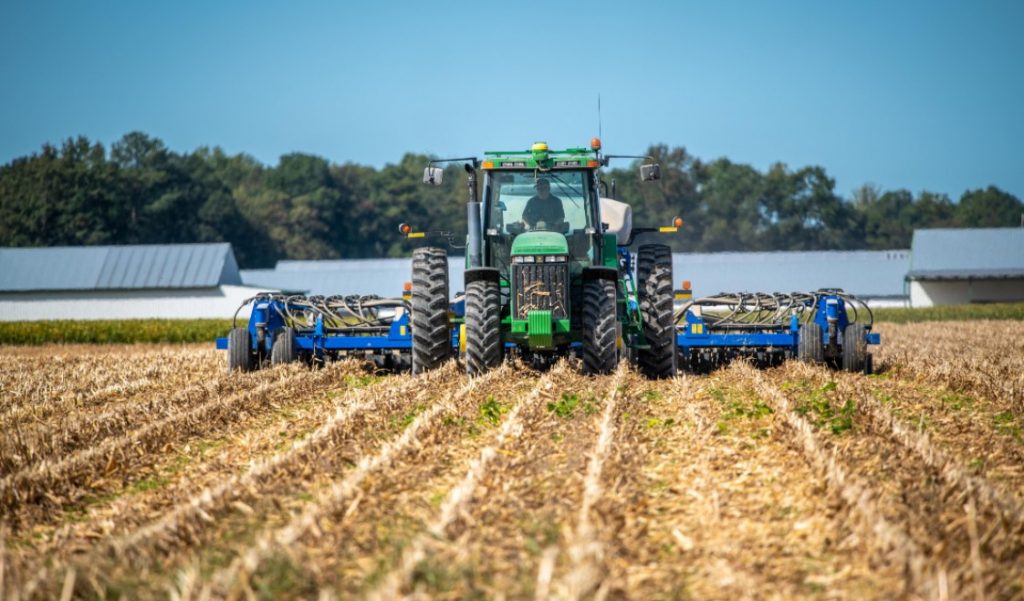
Visit to register: https://go.umd.edu/crop21reg
Due to circumstances beyond our control, we are unable to host the event in-person in 2021. The full program will be offered virtually, with access to programming available to attendees on-demand starting November 15, 2021 through December 10, 2021. The program features speakers from North Carolina State University, Purdue University, University of Arkansas, University of Delaware, University of Maryland, University of Nebraska – Lincoln, University of Wisconsin, USDA-ARS, USDA-NRCS, Virginia Tech, Washington State University, and more.
Registration is $150 for all programing and CCA, pesticide, and nutrient credits. You can register until the December 10, 2021 deadline, but leave enough time to watch the videos! The 2021 Mid-Atlantic Crop Management School will offer CCA continuing education units (CEUs) approved by the Certified Crop Adviser Program in the following categories:
Crop Management (5)
Soil & Water Management (5)
Pest Management (5)
Nutrient Management (5)
State level pesticide and nutrient management credits will be available based on approval of each talk by agency personnel or representatives. The following state credits are available: nutrient management – DE, MD, VA, PA; state pesticide – DE, MD, VA (private and public), PA. Eligibility for CEU’s will be contingent on completion of the provided online verification form by December 10, 2021. Thank you for your continued support of the Mid-Atlantic Crop Management School and we hope to see everyone safely, in-person in 2022! Registration link: https://go.umd.edu/crop21reg.
Nematode in Atlantic Soybean Production Webinar
Nematodes consistently rank as a top yield robber of soybeans. Join us November 16 from 9-12:00 for the Nematode in Atlantic Soybean Production Webinar to discuss nematode distribution and management strategies for the region. The webinar is free, but registration is needed for access to the zoom link. Registration information can be found at https://www.pcsreg.com/nematodes-in-atlantic-soybean-production-webinar. Topics of emphasis will include updates from regional nematode distribution surveys, assessment of soybean cyst nematode seed treatments, root knot nematode on-farm field trials, general management strategies, and how to collect and submit soil samples. Please email Alyssa Koehler akoehler@udel.edu with any questions.
David Langston, Extension Plant Pathologist, Virginia Tech Tidewater AREC
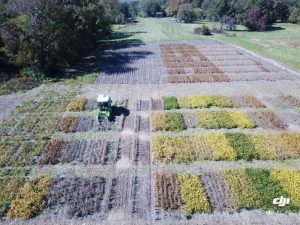
New tool for Soybean Variety Trial Data
David Holshouser, Virginia Tech Extension Soybean Agronomist & Virginia Sykes, University of Tennessee Extension Variety Testing & Agroecology
Which soybean variety is best suited to my region? State variety testing programs provide critical research to help answer that question by evaluating hundreds of soybean varieties every year across multiple locations within a state. But what if we think beyond the bounds of our state borders when it comes to variety evaluation?
While a single state alone provides valuable data, our growing regions often cross state lines. A location in southeastern Virginia may share more similarities to sites in eastern North Carolina than it does to the Northern Piedmont of Virginia. Furthermore, by combining variety testing data across multiple states, we can create a more robust dataset that allows us to better predict which varieties are best suited to specific regions and growing conditions.
Pulling and combining data from select locations within multiple state variety testing programs can be a daunting task. Over the past year, a team of variety testing coordinators from Tennessee, Arkansas, Kentucky, North Carolina, and Virginia have been working to make that process a lot easier. Through funding from the United Soybean Board and in collaboration with Centrec Consulting Group, LLC, we created a tool that will allow users of variety test data to combine and visualize soybean variety testing data across multiple states in the Mid-South. This new tool is available at https://marketviewdb.centrec.com/?bi=MidSouthVarietyTrials.
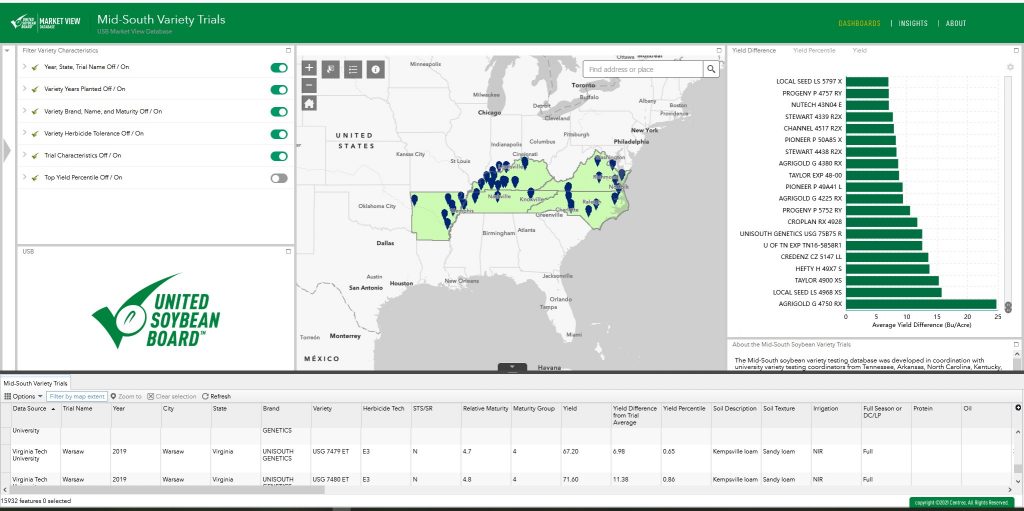
In addition to choosing locations, another key component of this database is the ability to filter the results to include only the relative maturities, brands, and herbicide tolerances that you want. It can also let you chose whether to include irrigated and/or non-irrigated, or full-season and/or double-crop sites. You can also chose the soil textures that you are interested in.
I won’t go into the details of how to use the site in this blog. But, try it out. Contact me with questions or comments.
The database currently contains 2018 – 2020 data but will be updated as 2021 soybean variety trial data becomes available. We hope that you find this tool useful. We would value your feedback/suggestions as we continue to refine this product to better meet stakeholder needs. A brief survey can be found at https://utk.co1.qualtrics.com/jfe/form/SV_6u5lHEwEOXnXODA.
The database described in this article was developed with support from the United Soybean Board.
Pickleworm Monitoring Update
By Lorena Lopez and Helene Doughty; Eastern Shore AREC, Entomology Lab
We continue to see a decrease in the incidence of pickleworms infesting squash at the Eastern Shore Agricultural Research and Education Center (AREC). This week in our last zucchini trial of the year, pickleworm larvae were found only on 10% of the sampled flowers (4 out of 40 flowers). This is an important improvement considering that seven weeks ago we were finding pickleworms in approximately 80% of our samples. This tendency will continue as we get close to winter and low temperatures.
Pickleworm and Melonworm Monitoring Update
By Lorena Lopez and Tom Kuhar; Virginia Tech Department of Entomology
Last week, we continued to find pickleworms borrowing into zucchini squash flowers (Fig. 1) in the Eastern Shore, whereas the incidence of melonworms borrowing in the fruit started to decrease. Additionally, there was evidence of pickleworms borrowing into garden-grown pumpkins in the Chesapeake area, including new borrowing holes found on fruit harvested after a few days (Fig. 2-3).
In the Northern Neck (Montross and Warsaw specifically), zucchini squash, crookneck squash, and pumpkin fields were checked for pickleworm and melonworm infestation in mid-September and early October. There was no evidence of worm infestation.
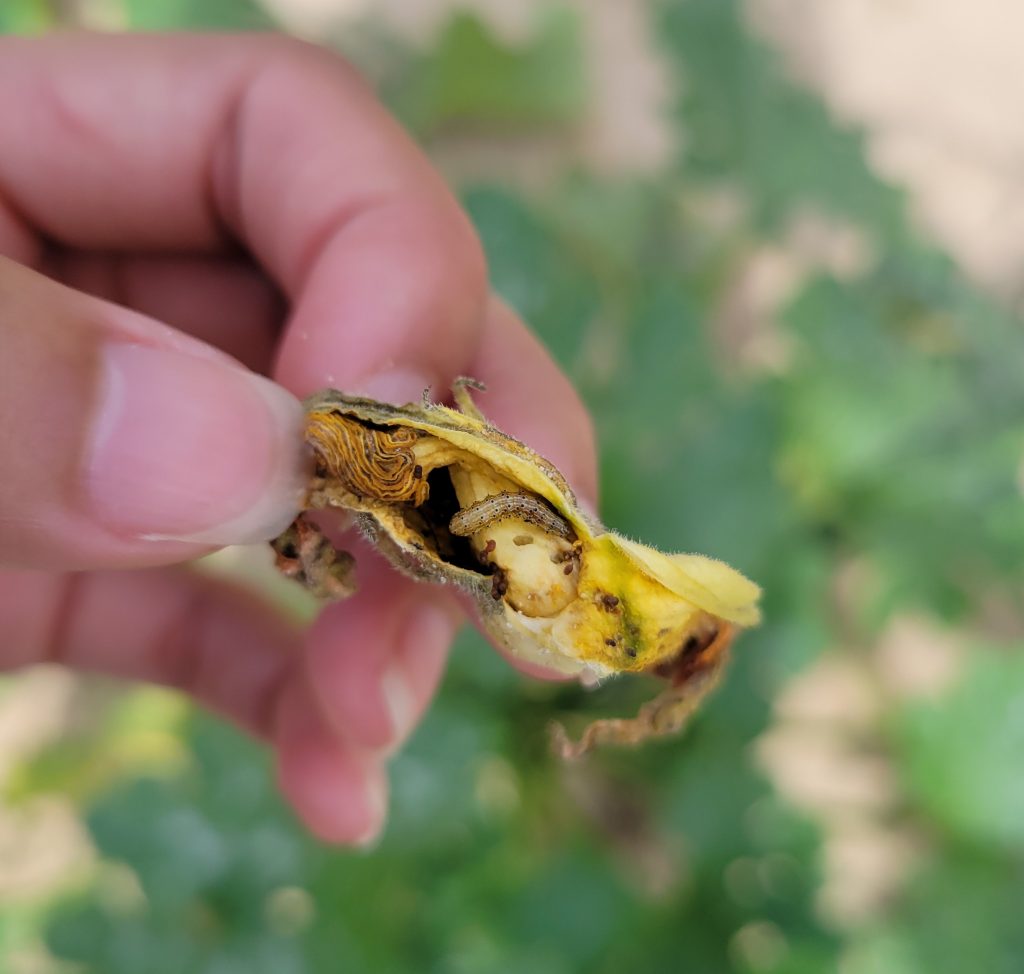
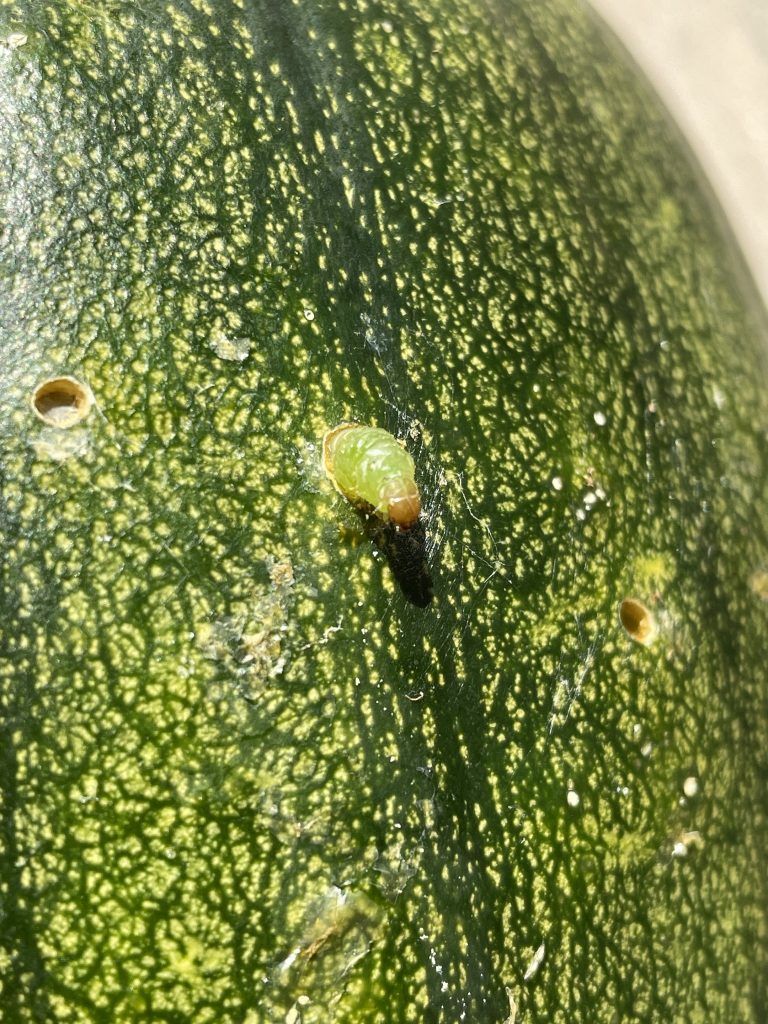
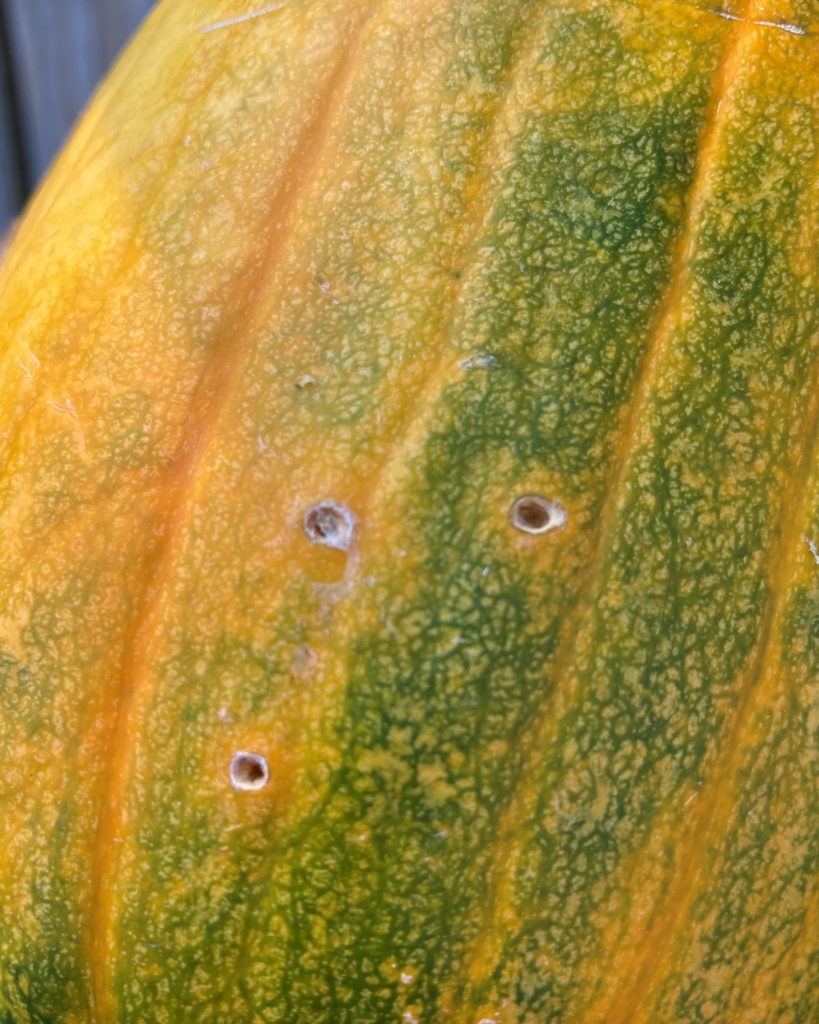
Update on Fall armyworm outbreak in Virginia
By: Tom Kuhar, Alejandro Del Pozo, and Sally Taylor
Virginia Tech Department of Entomology
In the past week, many areas of Virginia have experienced severe outbreaks of fall armyworms (FAW), which have completely destroyed lawns, sod plantings, hayfields, and alfalfa fields. As you would imagine, we have gotten a lot of calls about these pests. We’ve included some of the FAQ below.
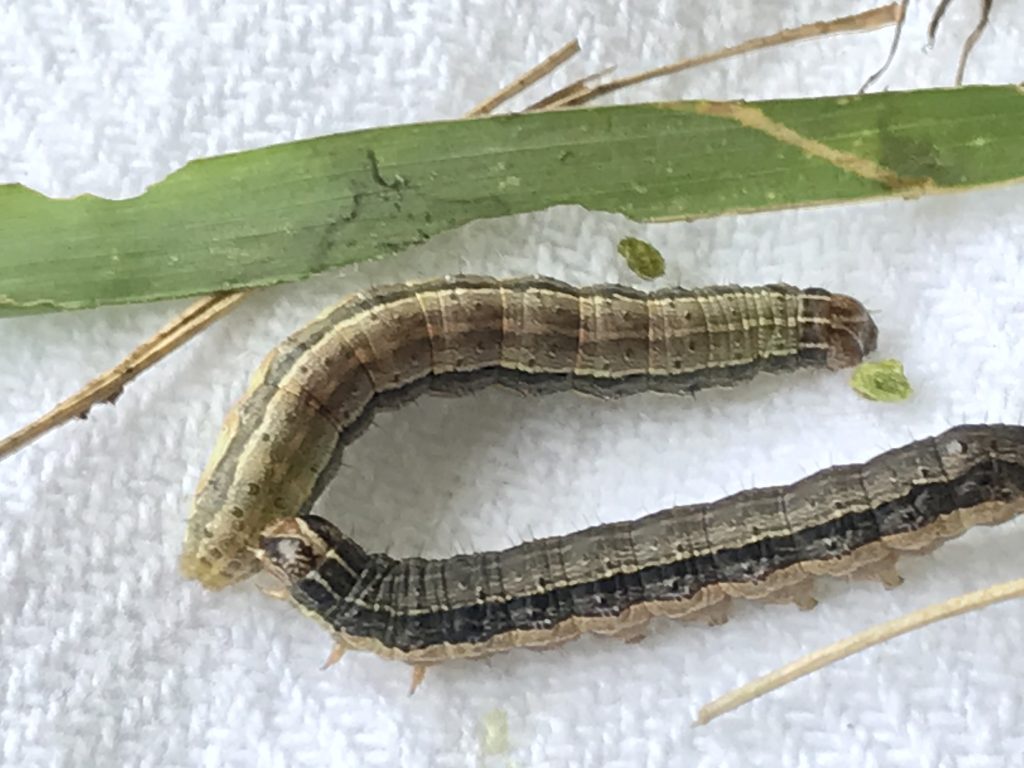
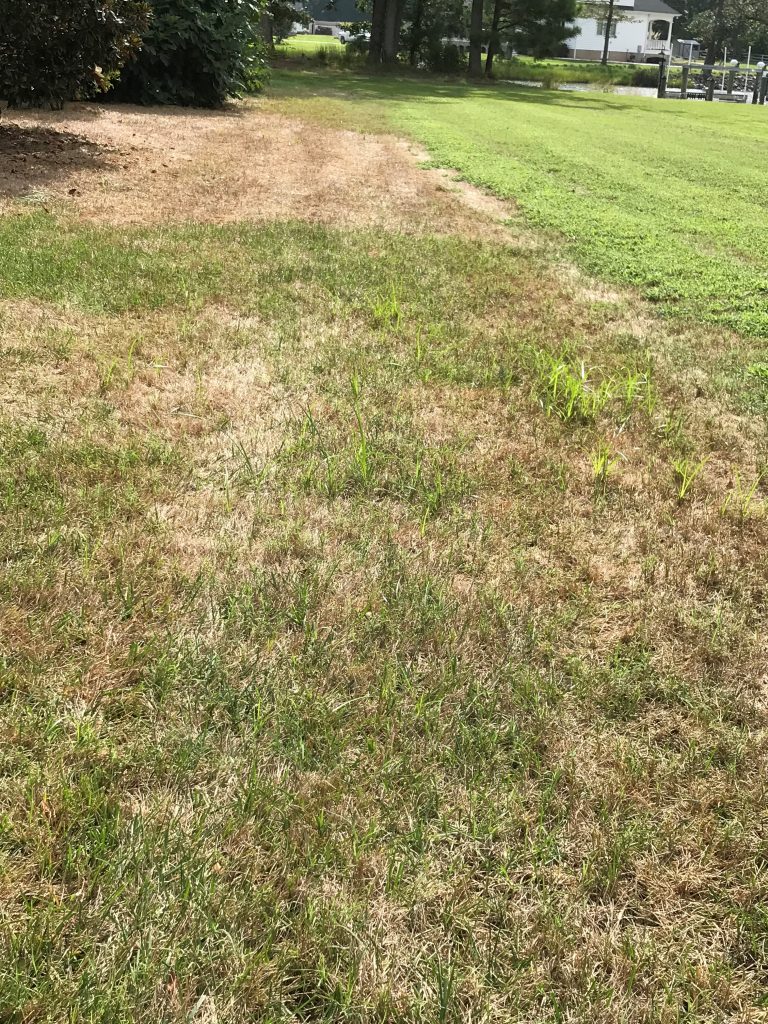
- Who’s being harmed the most by armyworms?
Lawns with turf-type fescue grass are being hit the hardest across Virginia. Alfalfa and hayfields are also being attacked.
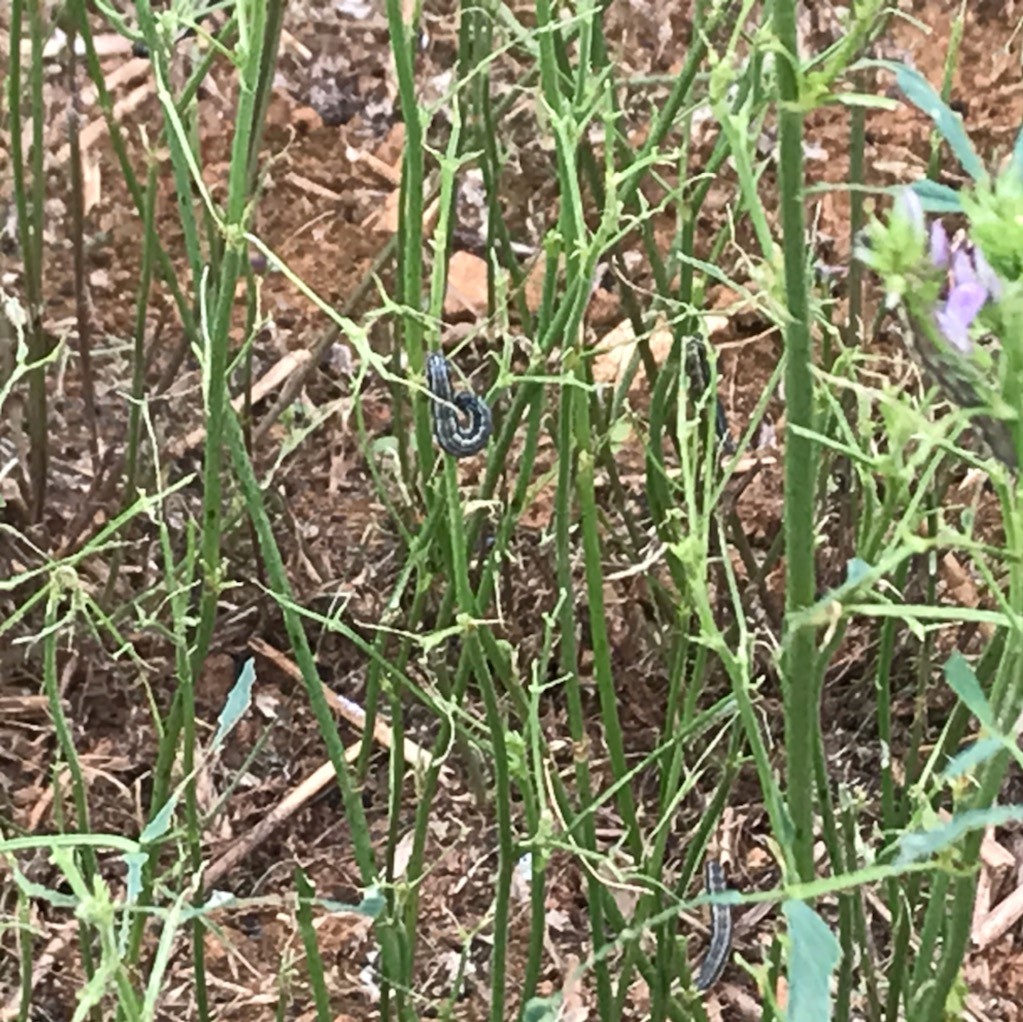
2. What crops are at risk?
While FAW are known to attack a number of crops such as grasses, small grains, corn, sorghum, soybean, and vegetables, this particular strain of FAW seems to be a bit more selective. Several people have reported FAW only eating the fescue grass and leaving behind crabgrass and other plants and weeds. Kentucky bluegrass, and Zoysiagrass for example have not appeared to have been damaged. There have also been very few reports of FAW in late-planted sweet corn, which is often a magnet for FAW. So, we are not sure exactly what crops might be at risk from this current strain of FAW. We are advising to keep a close watch on all susceptible host plants.
3. Does climate change play a role in spreading armyworms? If so, how?
Fall armyworms are tropical moths. They cannot survive cold winters. With climate change, it is possible that these moths are overwintering a little further north than usual. If climate change leads to dry (drought) conditions in the southern states, then high densities of these moths can build up. When storm winds blow north, they carry the moths to the mid-Atlantic, northeast, and Midwestern states.
4. What do you think the rest of the year will look like in terms of armyworms? Is the worst behind us or yet to come?
Great question. The fall armyworm will complete a full generation of its life cycle (egg-larvae-pupa-adult moth) in about 30-40 days, depending on weather conditions. This fall armyworm outbreak occurred early enough for the moth population to still cycle through another generation here in Virginia, meaning more eggs might be deposited on lawns and more devastation from larval feeding may occur. However, FAW are very susceptible to disease that occurs after wet rainy conditions, which we’ve also experienced. So, we may see things go either direction. Still don’t know.
5. Have there been previous years where we’ve seen a similar explosion in army worms? Is this going to be the ‘new normal’ having FAW every year?
We last had a fall armyworm outbreak in 2018. It was not as severe. This is the worst FAW devastation that I’ve seen in Virginia in my 30-year career in entomology. We still do not know if we might have another huge outbreak of FAW in 2022. All we know that some insect pests have cycles between outbreak. It could be possible that with warmer and dryer conditions, we might see FAW being present in higher number during the upcoming years. Now we know that this creature can come in Virginia as early as late-August. Scouting for this pest will be still crucial.
6. What can you do about them?
If lawns have been killed, the only recourse is to reseed the lawn this fall. If new fall cover crop plantings have been devoured, then reseeding those also may be the only recourse. For crop protection, insecticides recommended for control include most pyrethroids (active ingredients such as bifenthrin [in the products Talstar, Brigade, Sniper, and many others]), lambda-cyhalothrin, and commercial products such as Mustang Max, Baythroid XL, and others), the carbamate, Lannate LV, and many of the more selective (lepidopteran-targeting) insecticides such as the diamides Prevathon, Coragen, Acelepryn, Besiege, indoxacarb products like Steward, Avaunt eVo, Provaunt, the active ingredient spinosad (in products such as Blackhawk, Tracer, Matchpoint), and other products including Radiant, or Intrepid Edge. Consult the relevant Pest management Guide for specific recommendations on the various commodities. Please note that control of large larvae may be difficult with any insecticide. Link to the VCE Pest Management Guides for Field Crops, Vegetables, and Turf are provided below. On turf, we have gotten very good control of FAW larvae with pyrethroids, which are also one cheaper insecticide options. Golf course turf treated with a systemic diamide insecticide like Acelepryn or Tetrino have shown no damage even after 50 days post-spray.
Links to Pest Management Guides https://resources.ext.vt.edu/
Turf:
Field Crops:
Vegetables:
Pickleworm/Melonworm Monitoring Update
Increased infestations with pickleworm and melonworms continue to be observed this week in the Eastern Shore of Virginia. Yesterday, Sep. 2nd 2021, these pests were found feeding on yellow summer squash, green zucchini, and dumpling winter squash crops. All plants sampled in Cape Charles (n= 30) and Machipongo (n= 20) showed at least one fruit and one flower bud with either pickleworms or melonworms, many times with both. If you have any squash crops at the moment, please continue to monitor your plants.
Virginia Peanut Field Tour
Next week on Sep 8, 2021, Tidewater Agricultural Research and Extension Center (TAREC) will host an “express” peanut field tour. With registration starting at 7:30, attendees will be updated on peanut research on disease, insect and weed management, as well as varieties recently released and in the pipeline for release. Pod maturity of the currently most significant cultivars will be observed. Last but not least, the participants will have the opportunity to be welcomed and interact with the TAREC’ s new Director, Dr. Matthew Chappell. The agenda and map to the tour is here.

